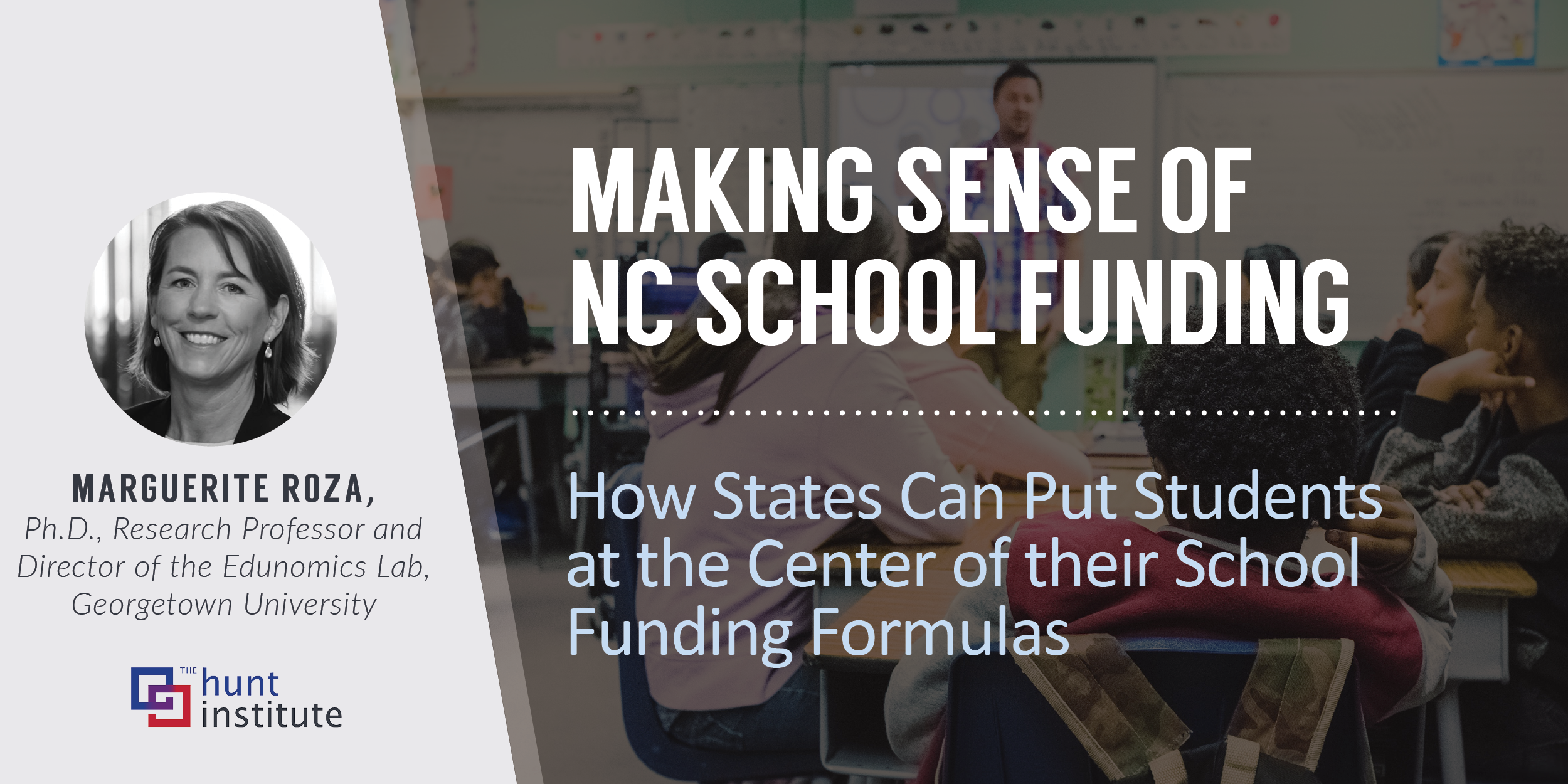

February 27, 2020

For Part 2 of our Making Sense of NC School Funding blog series, we have invited Dr. Marguerite Roza of Georgetown University to provide a national perspective on how states approach school funding.
Divvying up public funds for K-12 schooling is one of a state’s biggest responsibilities. Different states use a host of variables and formulas to determine how much each district receives. Depending on the state, the funding allocations may factor in the mix of student needs, staffing projections, cost of living, reimbursable costs for services, small size, and more. Some states layer in allocations for specific programs (often called “categoricals” for anti-bullying efforts and the like), or as incentives (such as for hiring National Board Certified Teachers), or for hold harmless provisions that prevent any district from getting less money than in the previous year. In the end, most states use some combination of different formula mechanisms such that the sum total is frustratingly complex, potentially inequitable, at times inflexible, and bound to draw ire from many.
And yet overhauling a state’s funding formula is extremely difficult, partly because so much money is involved, but also because of the political forces involved when every single community in a state is affected. Typically, two or three decades can go by before the political forces align to reshape a state’s funding formula. When the window does open for change, state leaders are then tasked with designing a formula that can last 20-30 years into the future, when schools will undoubtedly look different than they do today. A smart strategy is to design the formula around students, since students are the one element of schooling that we know will still exist decades later.
In fact, a growing number of states are moving toward student-based allocations (SBA) to foster equity, transparency, and flexibility. With SBA, states distribute a fixed amount of money per pupil or per type of pupil, with more money allotted for students with greater needs, such as those living in poverty or with limited English or disabilities. The money follows the student to their district.
While states are increasingly moving in this direction, at the moment most state funding formulas operate as hybrid approaches. At the Edunomics Lab at Georgetown University, we’ve analyzed 29 states to date on what share of dollars is doled out on the basis of students. As shown below, states range from just 1 percent to 85 percent (with years of analysis ranging from fiscal years 2014 to 2019). In fiscal year 2017, North Carolina allotted 21 percent of its state and local monies on the basis of students. Many of the remaining dollars were doled out through the state’s staffing formula and earmarks for specific programs.
Moving more funds to a student-based allocation model sets states on a path toward greater equity, transparency, flexibility, and productivity. And aligning money with students gives state leaders a better shot at creating a finance formula that can weather the inevitable changes to schooling in the years ahead.
Author

Marguerite Roza, Ph.D.,
Research Professor and Director of the Edunomics Lab, Georgetown University
Dr. Marguerite Roza is Research Professor at Georgetown University and Director of the Edunomics Lab, a research center focused on exploring and modeling education finance policy and practice. She leads the McCourt School of Public Policy’s Certificate in Education Finance, which equips participants with practical skills in strategic fiscal management, policy analysis, and leadership.
Next week on the Making Sense of NC Funding blog series we will take a closer look at the history of school funding in the state and the role federal and local dollars have in supplementing state funds.